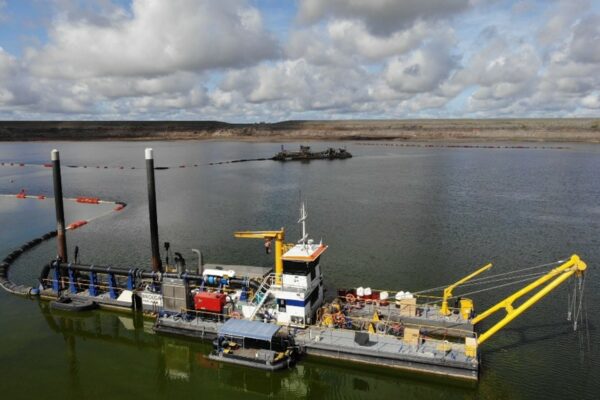This year’s Australasian Institute of Mining and Metallurgy’s (AusIMM) flagship Mine Waste and Tailing Conference 2021 will be held in Brisbane, Australia. The conference and exhibition will run from the 1 – 2 July. in2Dredging Pty Ltd (i2D) will be presenting at the conference, delivering a paper and a presentation on Dredging Fine Tailings. AusIMM reviewers’ feedback on the paper was that it is “good in a changing industry and [the topic] is new”.
Mine Rehabilitation
When ore is mined, it is often crushed and ground into fine particles. Subsequently, the valuable fraction is chemically extracted from the ground ore. What remains from this process are called tailings, which are the subject of i2D’s presentation and paper.
Tailings are generally stored in facilities such as dams and mined out pits. At the end of a mine’s life, most regulations require tailing storage facilities be rehabilitated to become part of existing landforms. Thus, some mine closure projects involve the transfer of tailings from one storage facility to another. A task that needs to be completed using the most cost-effective method possible, an example of which is dredging.

Dredging Fine Tailings
Fine tailings typically comprise of mainly silt. However, the chemicals used during the extraction process, transform the non‑cohesive silt into an apparent cohesive material. This is despite the fact that the material does not contain a high clay content. Therefore, tailings dredgeability assessments using geotechnical investigations are critical. This is because the dredging production rates, which inform budgets and schedules, can vary significantly depending on the stiffness of the fine tailings.
Several factors or bottlenecks can limit Dredges’ production rates. To realistically estimate production capacity, these production limiting factors need to be taken into consideration, along with dredging industry benchmarks. The dredge that is chosen for a project should deliver the best possible production rates. It should also be the most cost-effective over the project’s lifespan.
To track progress, the monitoring of performance indicators is recognised as essential in both the dredging and mining industries. However, for well-informed operational decision-making, the right dredging performance indicators need to be selected. Choosing the right indicators also helps to systematically improve performance.
i2D’s paper aims to define the specific challenges relating to dredging fine tailings from an above ground storage facility, for transferral to a mined-out pit. In addition, it compares dredging and mining perspectives on the dredging of fine tailings.
